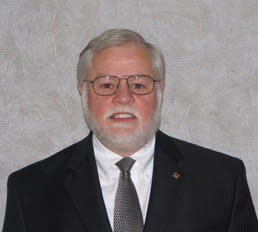
Roger Sherwood, past STFM executive director
When 105 family medicine educators signed on in 1967 to become a part of the newly formed Society of Teachers of Family Medicine, little did they realize the impact they would have on educating medical students and residents in this new medical specialty. These pioneers spread the message of family medicine education and they and their successors affected the lives of countless students, residents, physicians, and patients.
In its early days, STFM administratively was essentially a file drawer in the president’s office. The Society received a major boost when the American Academy of Family Physicians offered to provide administrative services in the early 1970s. Growth and success during the 1970s led STFM to build its infrastructure and hire its own staff, though the AAFP provided support through 1980, both financially and by providing office space in the AAFP headquarters.
in 1981, when I became the STFM Executive Director, incoming president F. Marian Bishop, PhD, MSPH, initiated an outreach program to the members by introducing the concept of special interest groups. The initiative invited STFM members to develop groups to address their special areas of interest. This outreach program marked a new stage of development — the creation of an infrastructure to involve members in new ways.
Building and growing the Society resulted in a number of initiatives that enabled the Society to develop a stronger base before moving to its next stage—outreach to other organizations and the larger world of medical education.
That internal building included the following during my 26-year tenure with the Society:
- Membership more than doubled, from 2,300 to nearly 5,000.
- Staff grew from 8 to 17.
- The Society’s finances improved from essentially no reserves to $2.5 million in reserves. The annual budget rose from $.5 million to $2.5 million per year.
- An Opportunity Fund was created to use STFM funds to provide financial support to special projects to enhance the infrastructure and to later support STFM group initiatives.
- Family Medicine, the Society’s journal continued to grow and develop.
- We continued the successful sponsorship and cosponsorship of Society meetings, including the Annual Spring Conference, Conference on Medical Student Education, Conference on Practice Improvement, Family in Family Medicine Conference, Behavioral Science Forum, Fall Session, and a number of special interest meetings on aging, substance abuse, research, etc.
- A fund-raising program was instituted for the STFM Foundation, which subsequently developed programs to build leadership in family medicine, including the Bishop Fellowship, International Scholars Program, New Faculty Initiative, and a mid-career faculty support program.
- A family medicine subject exam for medical schools was developed and marketed. This led to negotiations with the NBME and the development of a family medicine subject exam by the NBME, our initial goal.
All of these accomplishments positioned the Society to increase its outreach and to move into the larger world of medical education. Several key moves by STFM illustrate this greater role:
- Partnering with the International Center for Family Medicine, based in Buenos Aires, Argentina, to offer international meetings in Puerto Rico, Panama, Brazil, and Portugal in the 1980s
- Establishment of a Washington, DC presence with the employment of Hope Wittenberg, MA, in 1992. This was vital to a subsequent increase in advocacy, particularly for continued family medicine program funding. Providing financial support for the position were ADFM, AMFRD, and NAPCRG, while the AAFP provided office space.
- Successfully bidding on and receiving several major federal contracts, including clerkship education, curriculum development, substance abuse, residency education, immunization education, and other areas. From the late 1980s to the early 2000s these contracts totaled nearly $15 million and were important in strengthening our financial picture ($2.7 million in salary and overhead coverage) and advancing STFM’s reputation.
- Providing administrative services to other family medicine organizations, most notably to ADFM and NAPCRG, leading to more effective organizations and growing STFM staff.
- Being a full partner in the Future of Family Medicine and similar initiatives to enhance the continued advancement of the specialty.
It’s impossible to relate all of the things that contributed to STFM’s success over those 26 years. Dedicated presidents and boards, committed staff members, and a nimbleness that allowed us to respond quickly to opportunities as they arose were all vital to our success.
For me, those years involved a labor of love with a cadre of very special people—the STFM members. I was blessed to be able to spend more than a quarter century in service to this wonderful and vibrant organization.


The success of STFM would not have been possible without Roger’s strong and relational leadership and networking. I hope that Roger will be a presence at STFM’s 50th Anniversary Celebration at the Annual Conference in May! Warmly, Julie Schirmer, LCSW
I would echo Julie’s comments about the strong relational leadership and networking that evolved under Roger’s leadership. The organization has evolved and matured over the nearly 30 years that I have been a member. Roger, and now Stacy Brungardt, have transformed the organization from a collection of teachers to becoming a world-class organization with seemless operations and a track record of success. Happy 50th Anniversary STFM
I was honored to work closely with Roger on several projects and he was very skilled in tolerating high maintenance personalities (including mine) in helping STFM members pursue projects and initiatives to help advance the causes of STFM and family medicine. I met many people who became close friends via my STFM involvement and I am very glad that Roger was among those individuals.